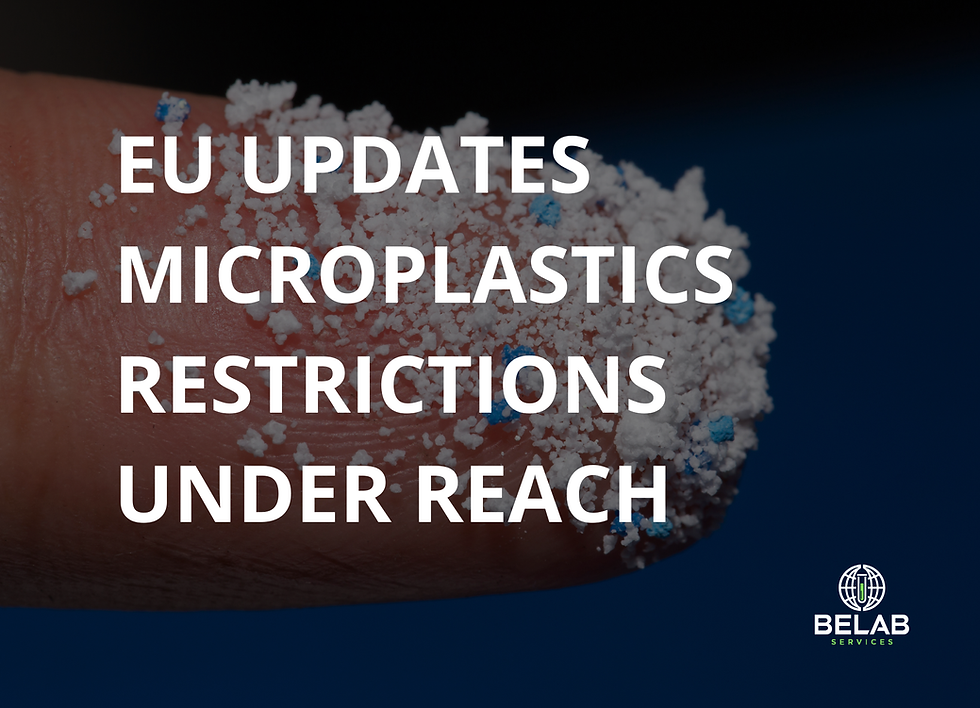Microplastics in cosmetics: New global restrictions, deadlines, and exceptions under REACH
- Daniel Jiménez

- 4 hours ago
- 2 min read
In recent years, various regulatory authorities have focused on microplastics present in cosmetic products, and have passed regulations that restrict or even ban certain poorly degradable functional ingredients. The goal is to mitigate the environmental impact these components generate when they end up in aquatic systems and ecosystems.
Table of contents

What ingredients are being affected?
Among the ingredients being targeted are, among others:
Encapsulated active ingredients (microcapsules with functional ingredients)
Exfoliating beads or solid exfoliating microbeads
Film formers (poorly degradable film-forming agents)
Glitters or plastic glitters
These ingredients are undergoing phased restrictions or bans, depending on the type of use, application, and region. In some cases, the phase-out period has already passed; in others, they are still in the transition period until 2035.
For example, plastic glitter is already being subject to stricter bans in many jurisdictions due to its high potential for environmental dispersal. Solid exfoliating microbeads (when not biodegradable) have also been subject to regulations in various countries for several years.
The new regulatory draft seeks to revise entry 78 on synthetic polymer microparticles (SPMs), highlighting that the current information does not accurately reflect the regulatory objective of:
Medicinal products
Repeal all such products, including those used in clinical trials.
R&D activities
If they are used for research and development, product and process oriented.
SPMs permanently embedded in a solid matrix
If specified microplastics (SPMs ) are permanently embedded in a solid matrix and are not expected to be removed or replaced frequently, they are not considered repealed. The amendment clarifies that the exception in entry 78(5)(c) (which governs these cases) will only apply where the intended end-use lasts for one year or more.
These exceptions aim to avoid a disproportionate impact on specialized or long-life products, while also allowing for the gradual elimination of the most problematic forms of microplastics in cosmetics.
Deadlines, transition and difference in uses
One of the key aspects of these new regulations is that not all affected ingredients disappear suddenly: legislators typically establish staggered deadlines, with transition stages for the industry to adapt formulations, assess sustainability, and make necessary modifications.
In many cases, the deadlines extend to 2035 for uses permitted during the transition.
Plastic glitter is already being banned outright in several areas without extended grace periods.
Film formers are being subject to more careful evaluation, with tiered restrictions based on product type and scale of use.
Encapsulated active ingredients and microbeads are also incorporated into these progressive measures.
_edited.png)







Comments